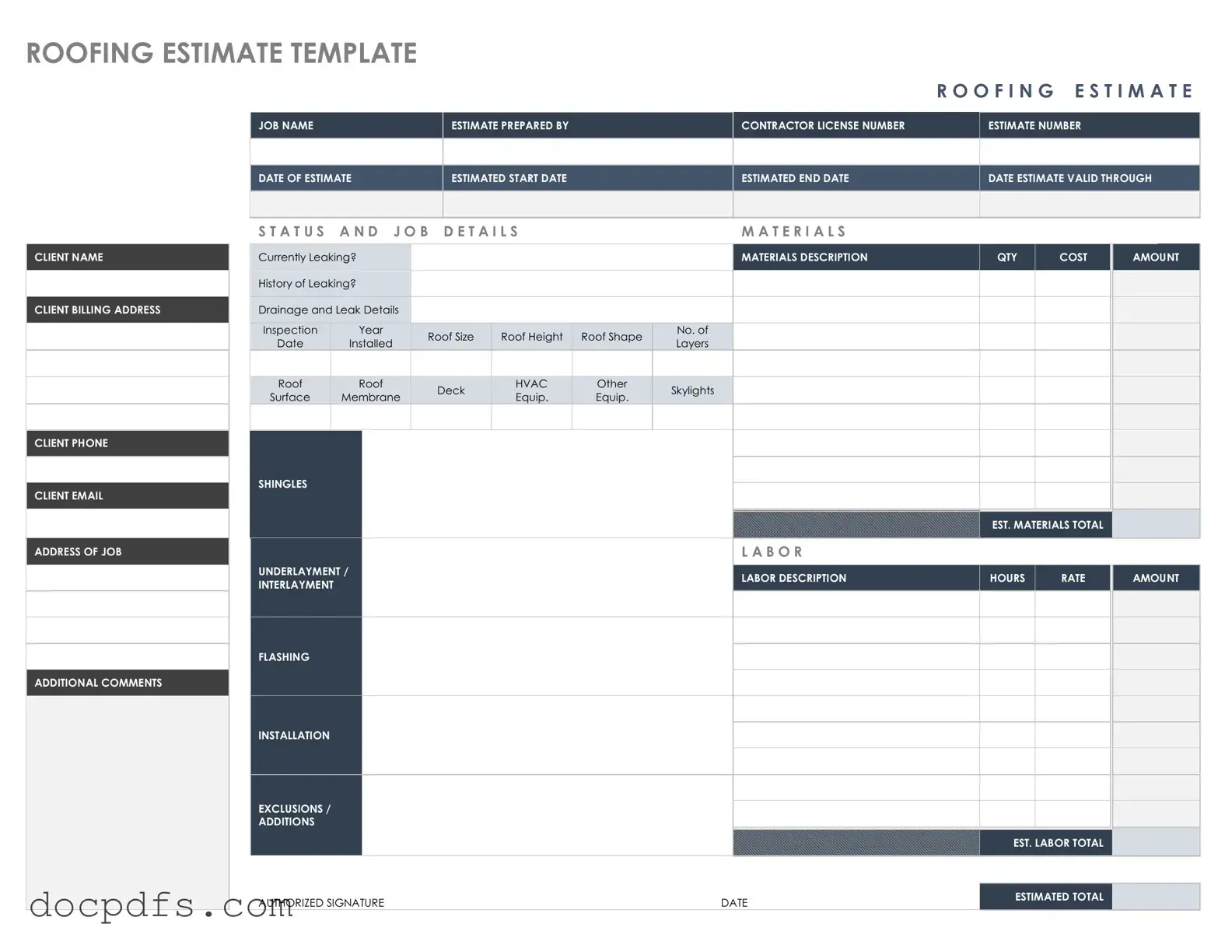Roofing Estimate Template in PDF
The Roofing Estimate form is a document used to provide homeowners with a detailed breakdown of the costs associated with roofing services. This form outlines the materials, labor, and any additional expenses involved in a roofing project. Understanding this form is crucial for making informed decisions about roofing repairs or installations.
Open Roofing Estimate Editor Now
